“What is this large vessel I found in the basement of an old psychiatric hospital?”
“Looks like a great big autoclave.”
“This brass brooch has a hidden spring and opens like a clothespin. Does anyone recognize this?”
“2 words: roach clip.”
“Looks like a telescope, maybe it used to be?”
“It’s a part of a ship log, it records distance.”
“Does anyone know what this is, specifically what the carvings in the object are?”
“From the little knowledge I have about Nordic mythology, this looks like a Nordic/Icelandic stave, a sort of rune for good luck (fishing or finding gold) for the fans of the Viking series.”
“What is this metal thing sewn into the women’s Charter Club golf pants that I got?”
“It’s to attach your golf glove to in between drives.”
“A wooden item with a wheel that spins smoothly by turning a crank on one side. What is this used for?”
“It’s a silk line dryer. It was used to dry fly-fishing lines way back when.”
“Made of wood, made in Japan, inside diameter about 10 and a half inches. What is the use though?”
“It’s a serving bowl, serve whatever you like in it. It doesn’t have a specific purpose.”
“What is the glass bump on older windows throughout the apartment complex?”
“Starting a fire in a fireplace requires an updraft. In a small, closed room, you need to crack a window. A vent like this lets you accomplish that without letting rain in.”
“What is the purpose of this cut glass hexagon with a hole?”
“It’s a Christmas ornament.”
“What is this fork with offset tines for?”
“This is a hot potato peeler.”
“Thing on the top moves up and down. What is this used for?”
“It’s an oiler, used to flood bearings with oil before the days of sealed bearings. I’ve had these on old lathes with babbitt bearings.”
“Seems to be iron, no moving parts, pack of Tic Tacs for scale. Is it used for display?”
“It looks like an ornamental display stand. My grandmother had something similar for collectible China/dinner plates.”
“Piece of vintage medical equipment, no maker’s marks of any kind. Looks like a tool used for something?”
“It’s a tonsil hemostat, a V-shaped instrument with a ratchet; each end has a blade; the inner edge is covered with a gauze pad clamped by a sliding ring on the arm.”
“Found this behind the drawer of a sewing machine from 1910. Maybe a letter opener or a broken paintbrush?”
“It’s a part of the late 1800s/early 1900s sewing tool kit.”
“A stick with 4 prongs approximately one foot long, possibly Scandinavian in origin?”
“It’s for frothing sauces.”
“A small plier, around 15 cm, all metal, no markings. They have a spinnable top part. What is this used for?”
“I had one in art school. It’s clamped onto a tube of oil or acrylic paint and cranked to squeeze all of the expensive paint available out of the tube. Very helpful for starving artists.”
“A spoonlike thing with a pointed end made of solid silver with engravings. Is this a kitchen tool?”
“Tupus were worn point facing upward to hold the dress together and to pin the cloak or shoulder mantle (lliclla) about the shoulders. They were a prominent means of displaying wealth and refinery for women Indios (or ‘cholas’) across the Andes.”
“5-inch plastic with nails and hooks is used to...?”
“It’s just for hanging paintings. The multiple hooks are to give you more height options once you place it.”
“Found this metal container with a detachable lid, and it has lots of small holes. Is this a mini cooker pot?”
“It’s a drawer sachet for potpourri.”
“The metal parts are button-type things and were found in a bin full of other random things.”
“I think I can answer this. Arnold baton holder for police public order kit. One loop clips around the belt, the baton goes through the metal hoop and then the other clip also goes around the baton. I have one myself as I’m a public order trained officer.”
“What is this paddle-like object? Received from a friend but our friend had no idea what it was.”
“My grandma was Norwegian and used a similar tool for transporting lefse from the countertop we rolled it out onto the griddle. Lefse is super thin so it needs a tool flat enough to slip underneath it and long enough to support it all the way across.”

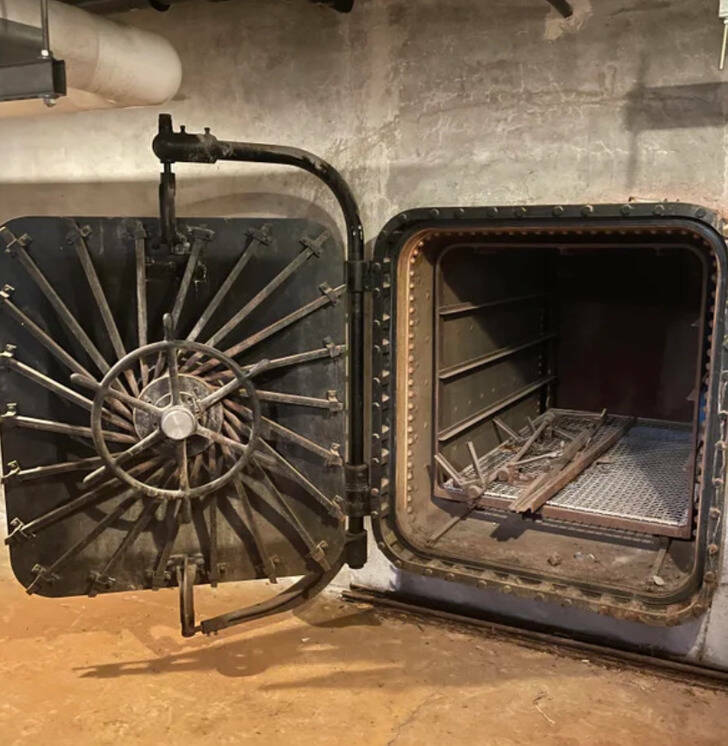
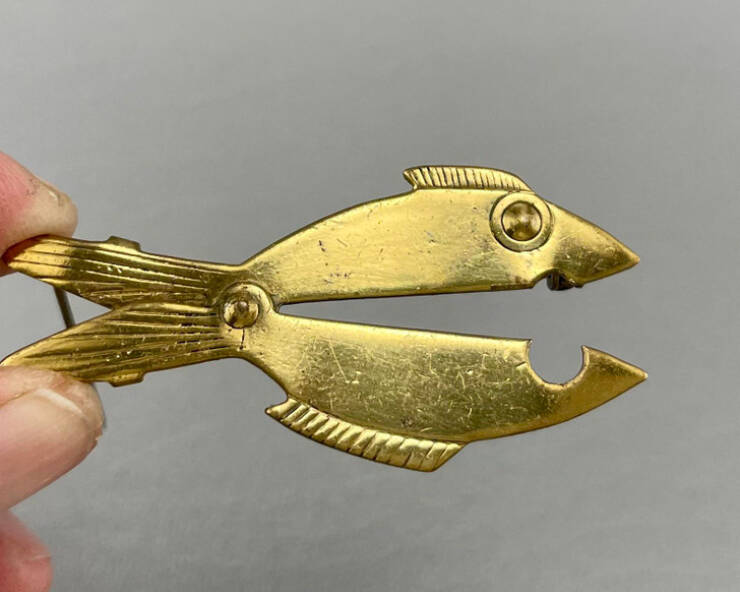
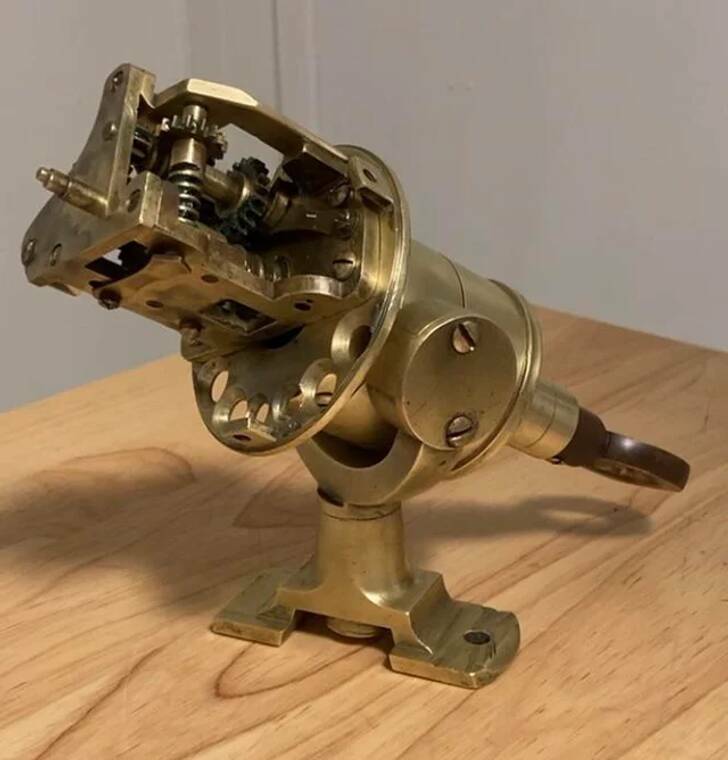
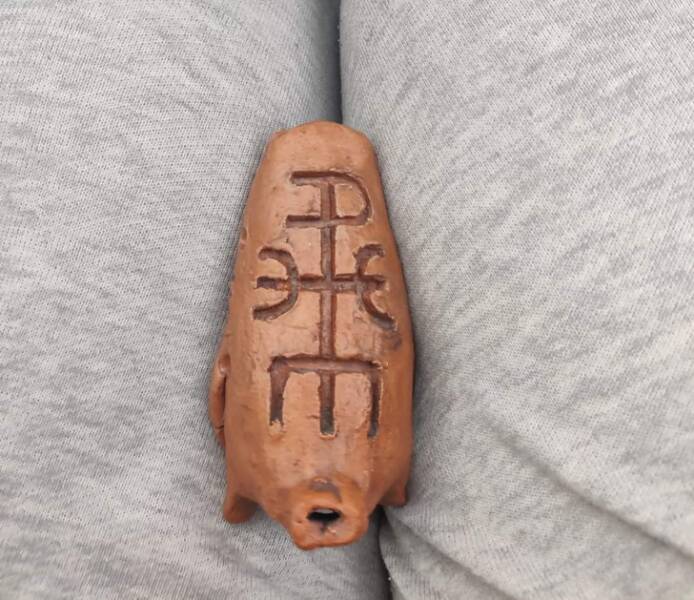
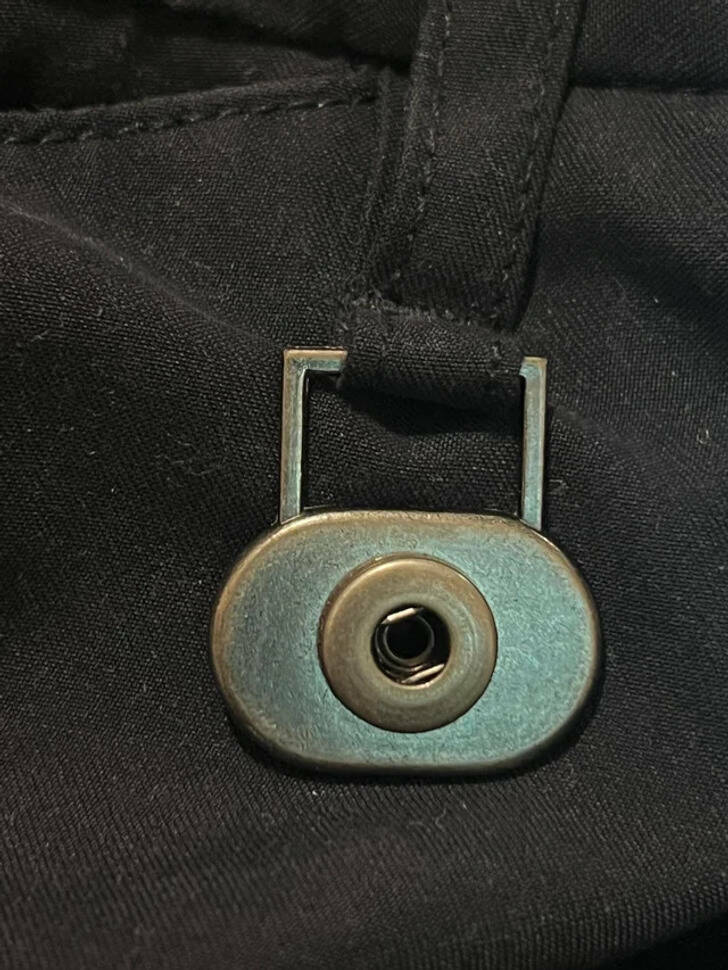
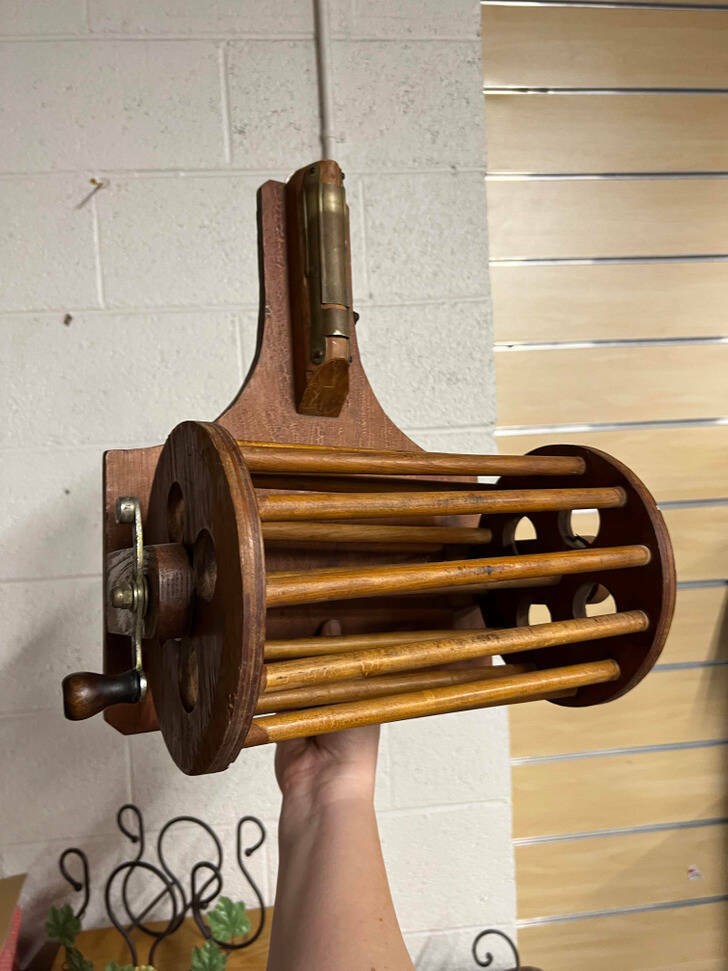
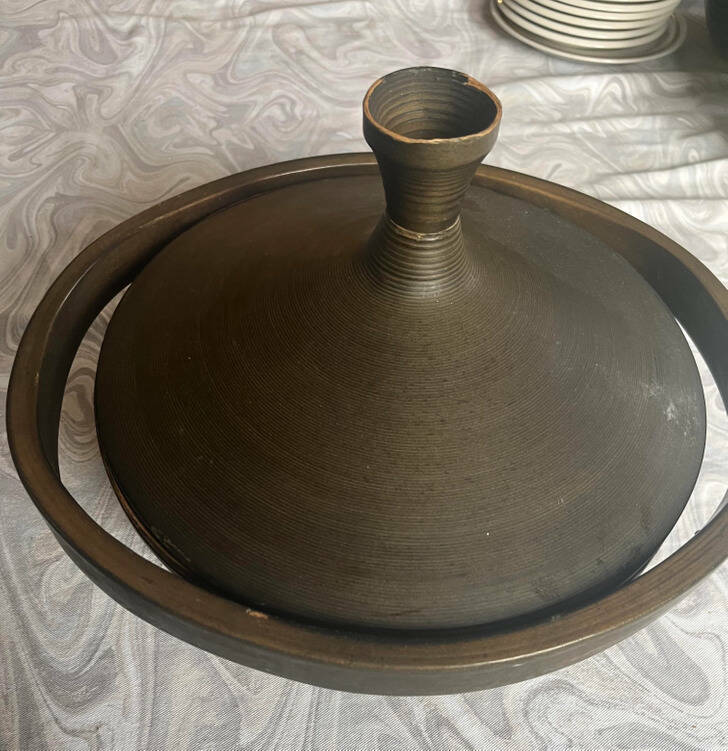
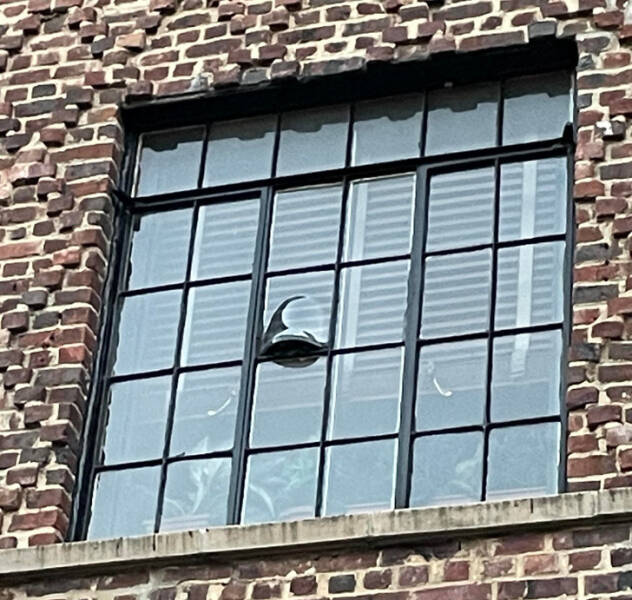
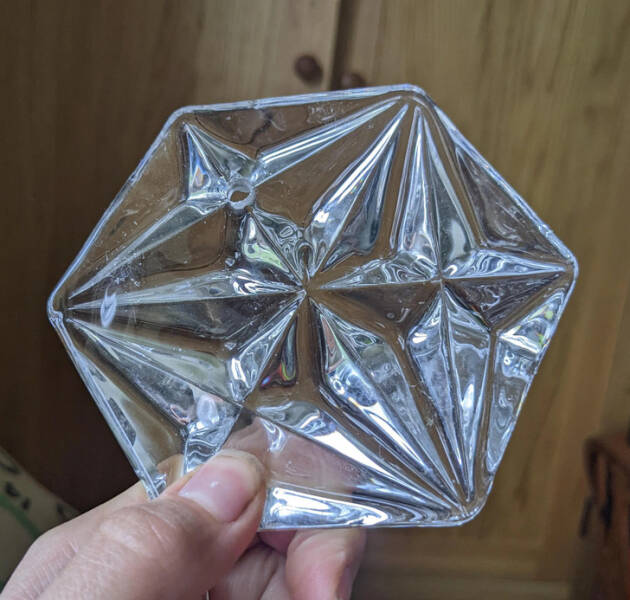
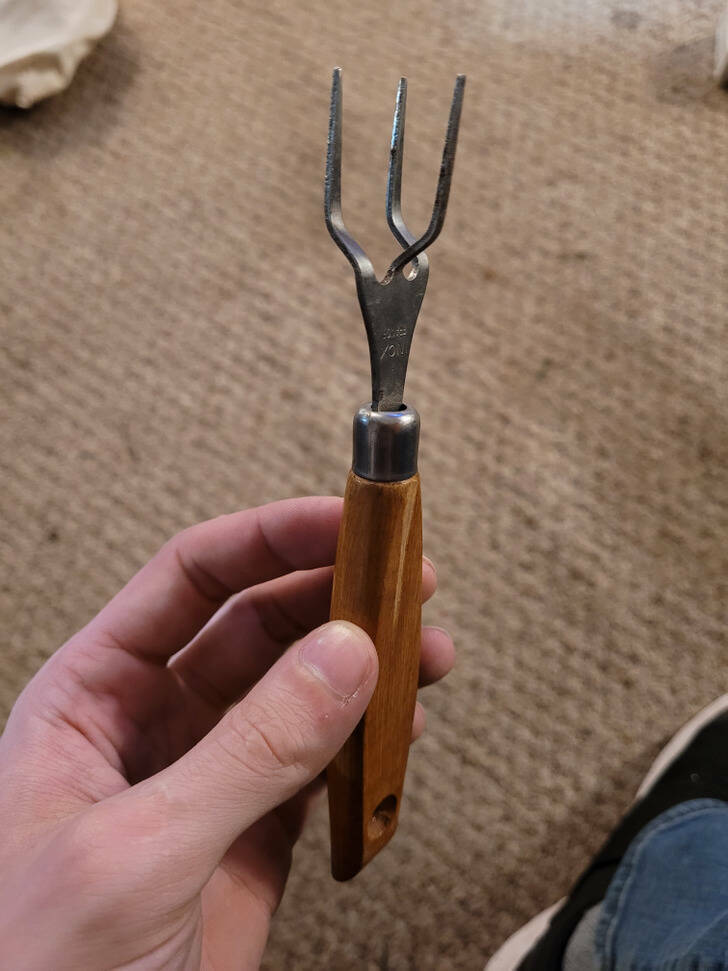
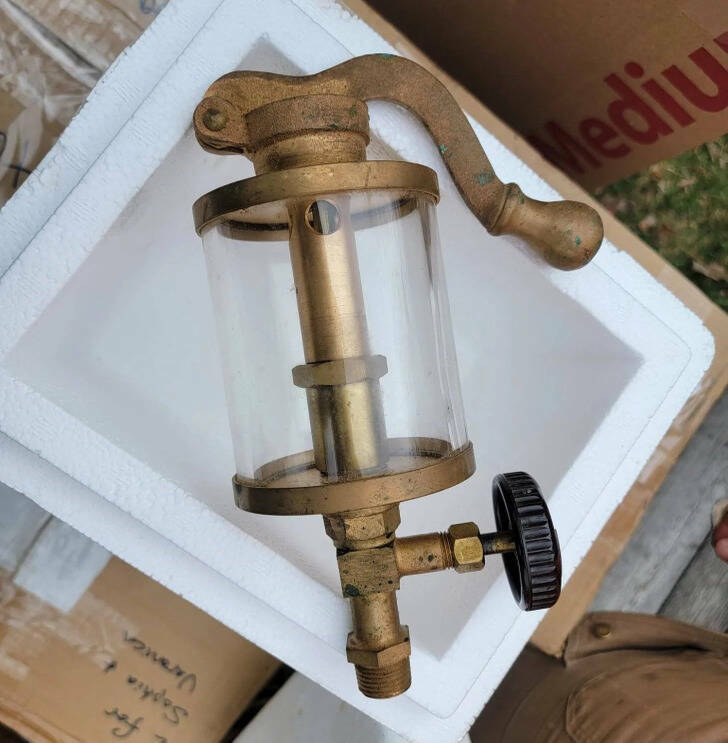
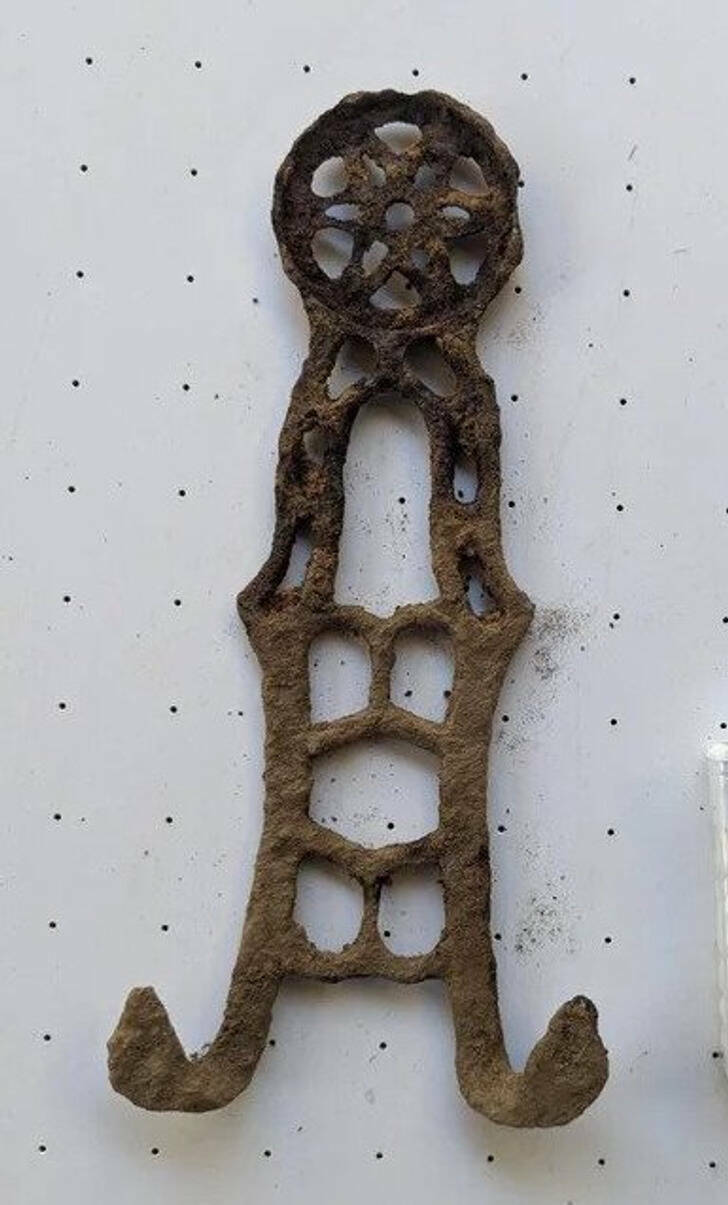
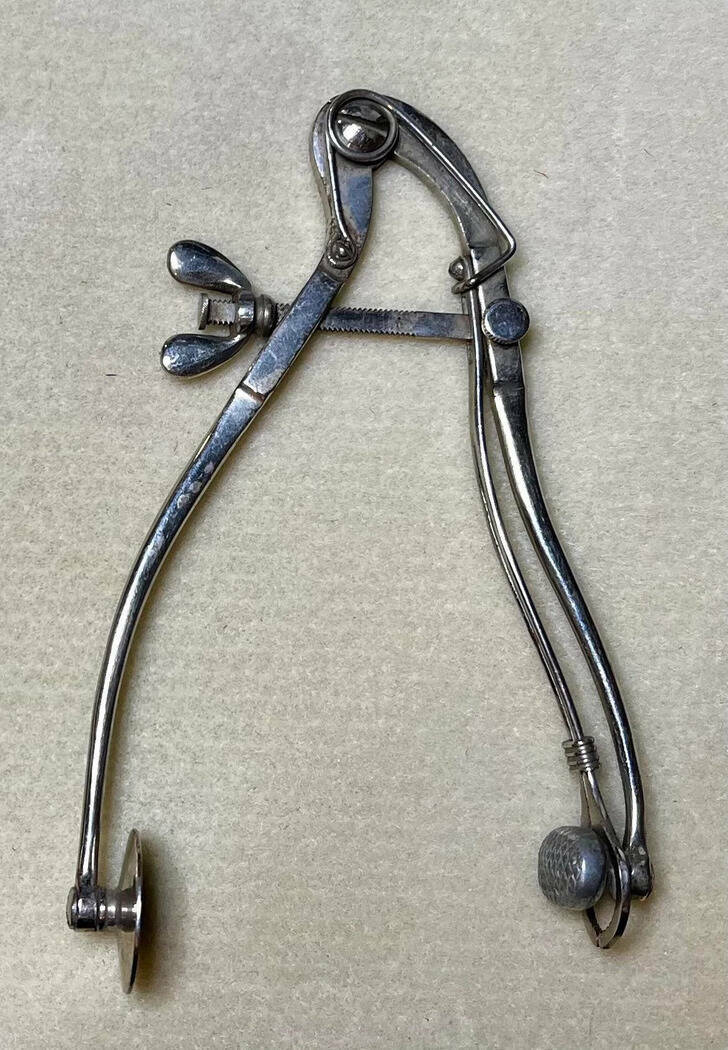
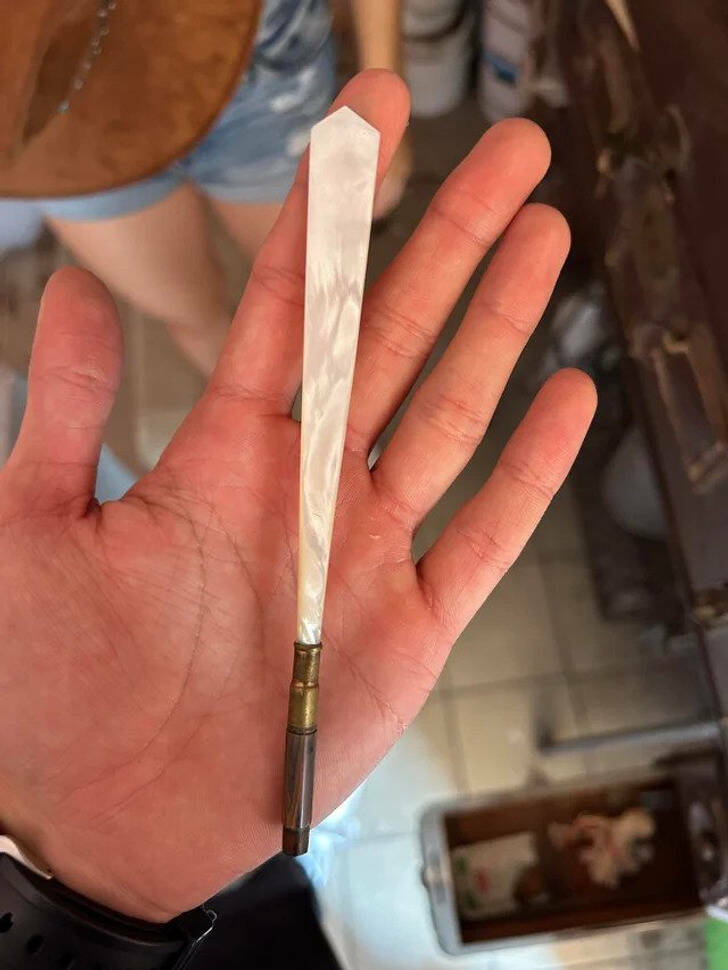
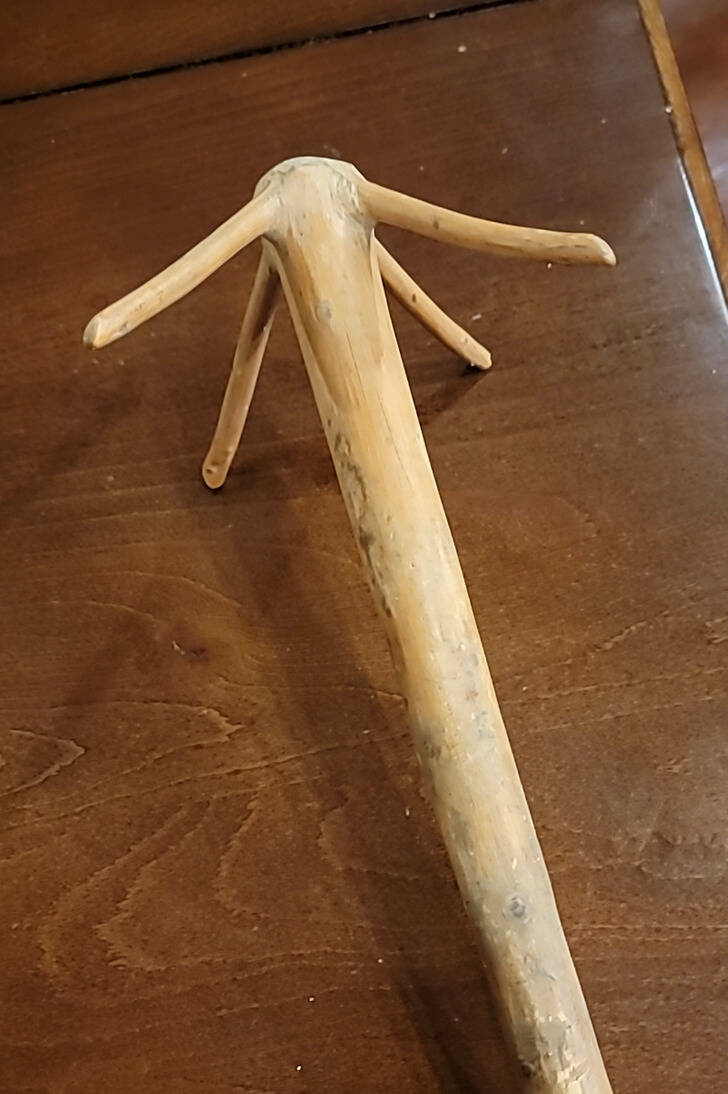
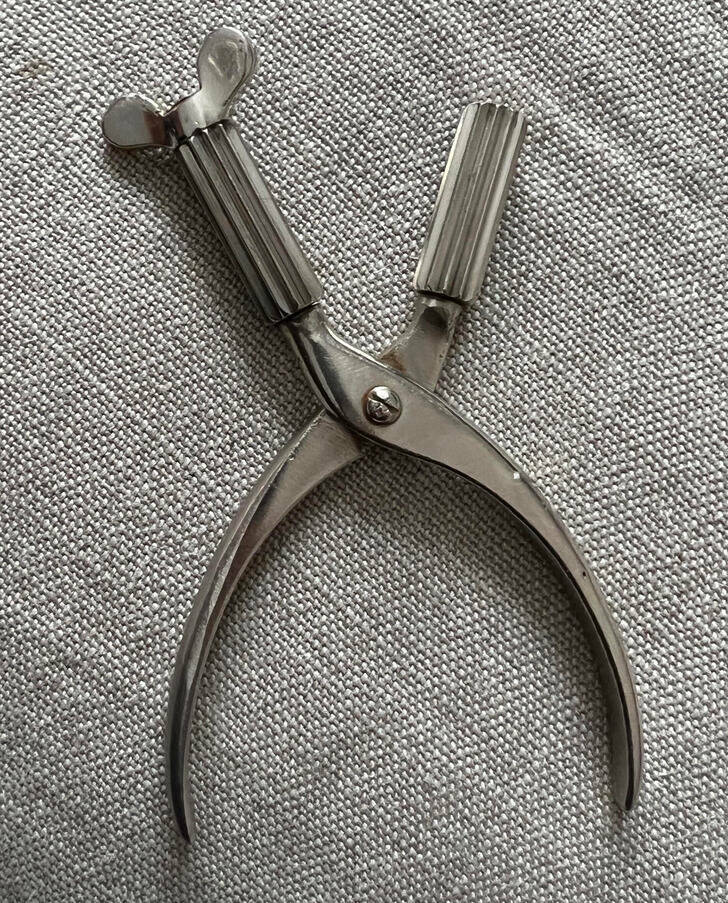
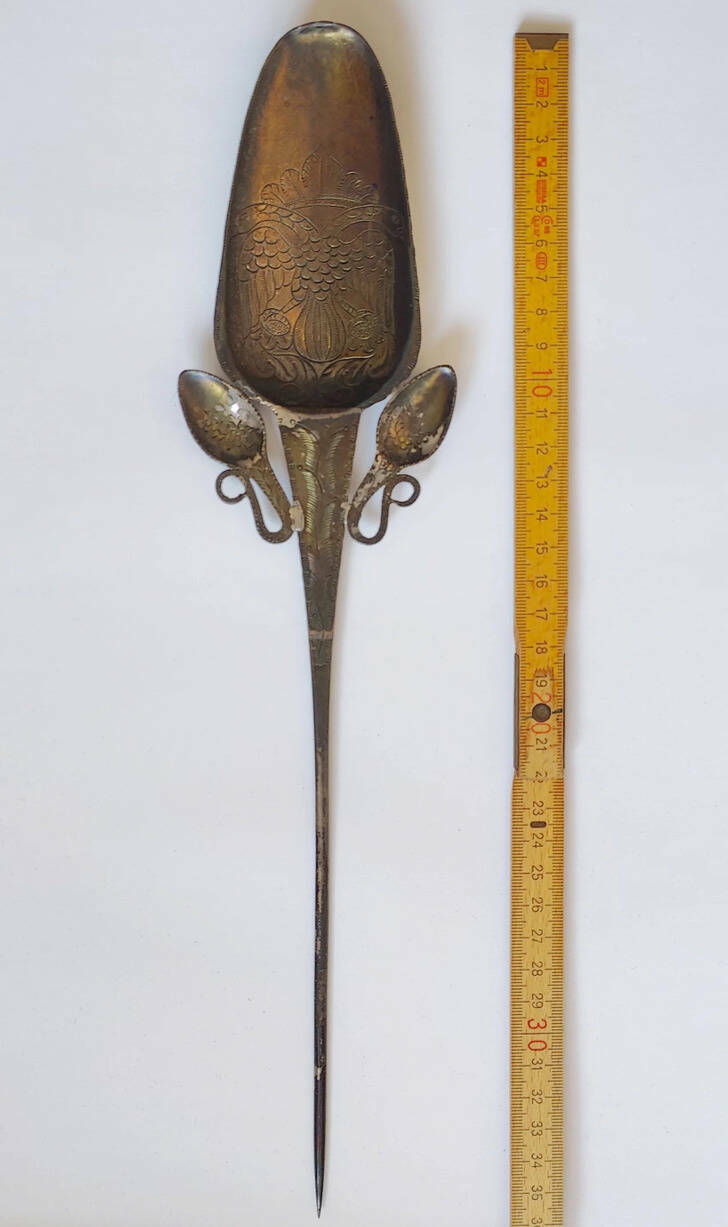
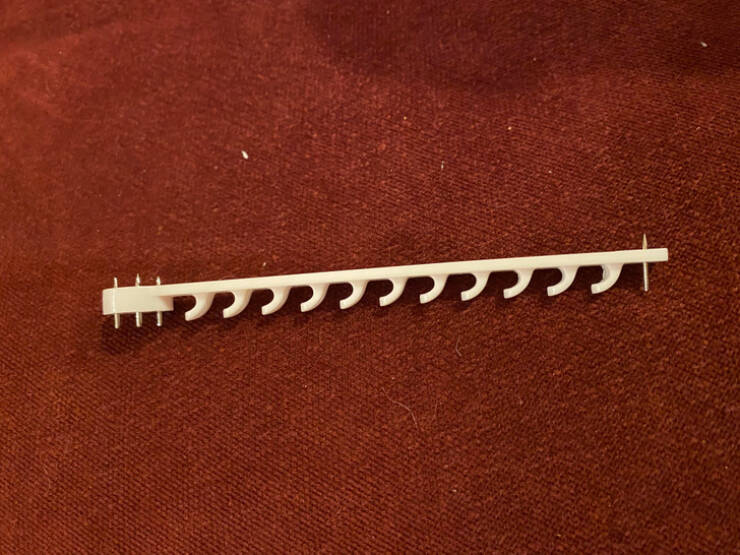
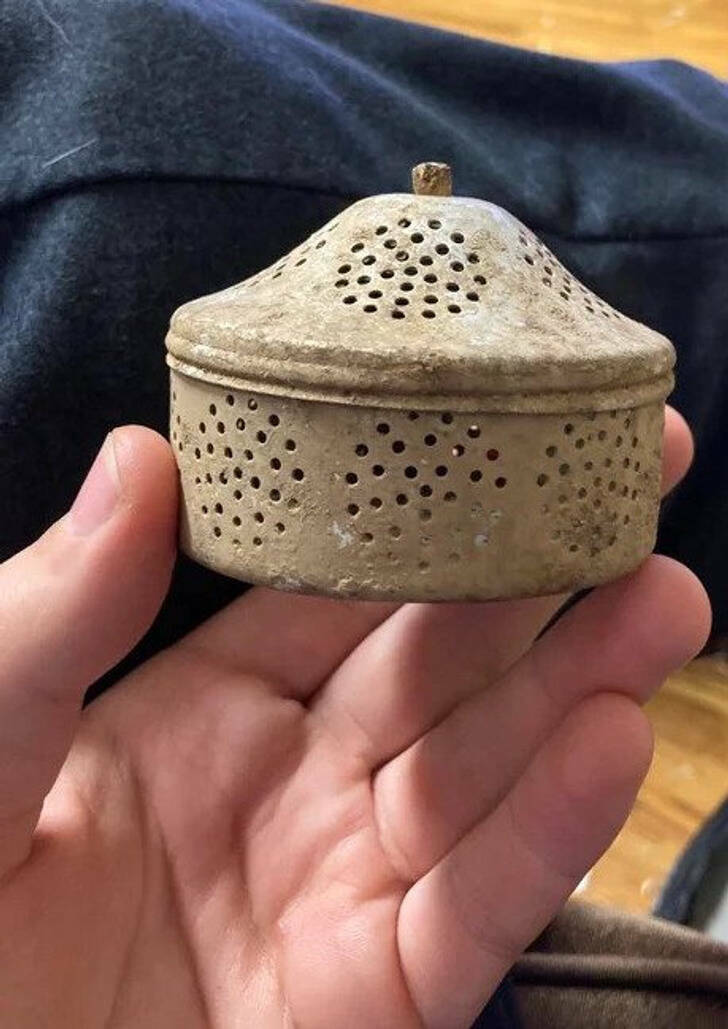
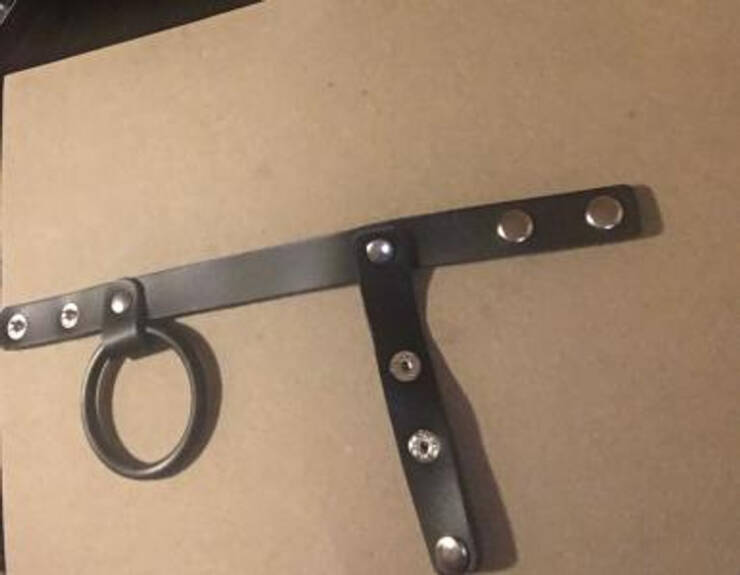
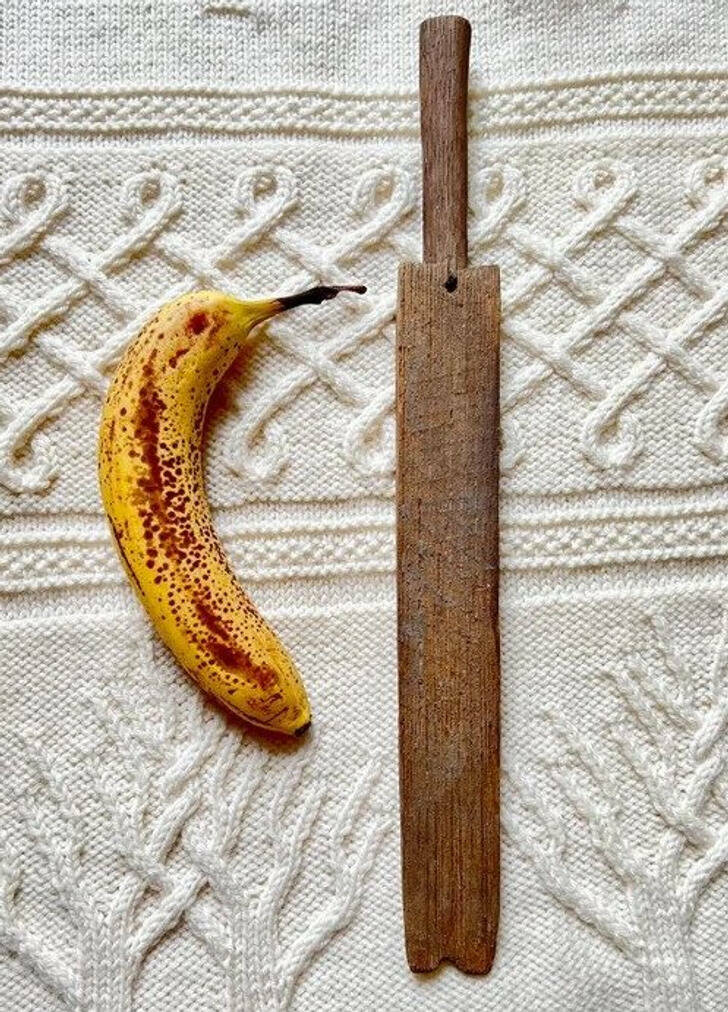



Small porridge crosiers were used like today's whisks.
#21 can also be a washing paddle a hand tool used to do laundry. It is made of wood, shaped like a baker's peel, but with a much shorter handle used as a grip. It was used to beat the wet clothes and linens, pushing out the dirt by hammering the items against the washboard, or against the flat slabs built into the laundry area.
And you know this from experience??